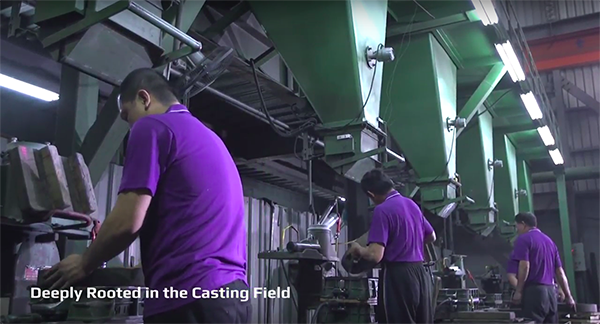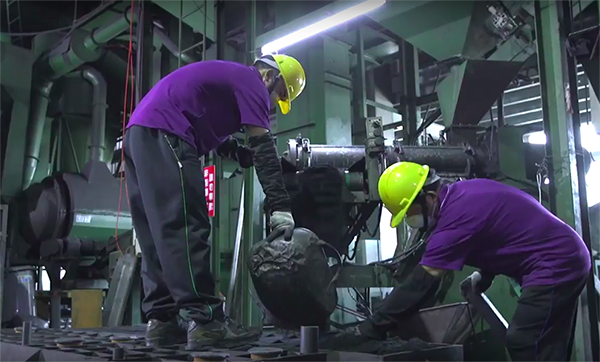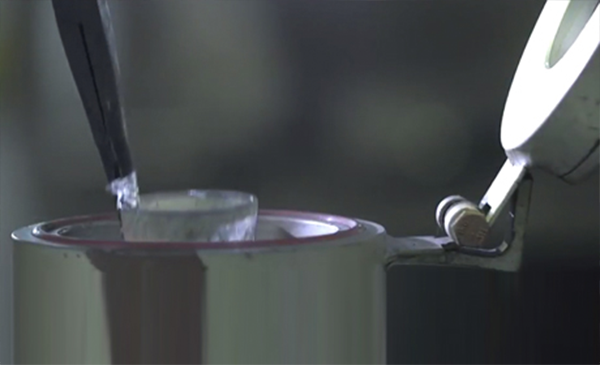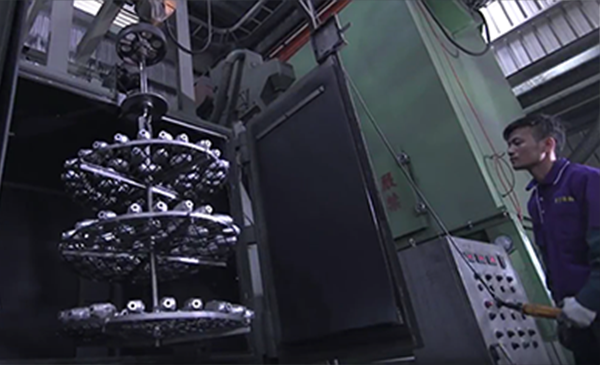Device Introduction
Mechanical Mold Making
Suitable for: Various small castings
The middle plate mechanical mold is a widely used basic component in mold manufacturing. It is a structural framework used to support and fix mold components, usually made of wood or other high-strength materials. The middle plate mechanical mold plays an important role in the mold industry, providing a stable and reliable foundation for mold manufacturing and assembly.
The main functions of the middle plate mechanical mold are as follows:
- Supporting mold components: The middle plate mechanical mold serves as the main support structure of the mold, bearing the weight and mechanical loads of the mold components. It ensures the stable structure of the mold during use, prevents deformation and displacement, and thus ensures the machining accuracy and quality of the mold.
- Fixing mold parts: The middle plate mechanical mold provides fixed points and mechanisms for installing mold components. Through proper design and processing, it ensures accurate alignment and stability of the various parts of the mold, enabling correct assembly and precise machining of the mold.
- Facilitating maintenance and adjustment: The middle plate mechanical mold usually has adjustment and fixing devices such as screw holes and adjusting bolts. This makes it more convenient and flexible to adjust and maintain mold components, allowing for quick disassembly, replacement, or repair of the mold.
- Connecting other mold components: The middle plate mechanical mold typically has various connecting interfaces and fixing holes for connecting with other mold components. These interfaces ensure precise fit and correct alignment between different mold parts, enabling the correct operation and processing of the overall mold.
The design and manufacturing of the middle plate mechanical mold need to consider the size, shape, and processing requirements of the mold. With precise design and high-quality manufacturing, the middle plate mechanical mold can provide stability, precision, and reliability for the mold manufacturing process, thereby improving the efficiency and product quality of the mold.
Self-hardening molding
Suitable for: Various medium to large castings
Furan self-hardening molding has the following advantages:
- Heat resistance: Furan self-hardening molding can withstand high temperatures during the casting process. Furan resin has excellent stability and heat resistance at high temperatures, making it suitable for casting high-temperature alloys and other high-temperature applications.
- Excellent surface quality: Furan self-hardening molding can provide high-quality surface finishes. The filling of furan resin mortar in the mold can result in a smooth and uniform surface. This is particularly important for casting parts that require high precision and aesthetic appearance.
- Shape versatility: Furan self-hardening molding can achieve complex shapes for casting parts. Furan resin mortar has good fluidity, allowing it to fill and replicate intricate details, thus meeting various design requirements.
- High production efficiency: Furan self-hardening molding features rapid curing. The catalyst can trigger the polymerization reaction of furan resin in a short time, reducing the casting cycle time. This helps to improve production efficiency and capacity.
- Environmentally friendly: Furan resin used in self-hardening molding is an environmentally friendly material that does not contain harmful substances and volatile organic compounds. Compared to traditional casting molding methods, furan self-hardening molding can reduce environmental impact.
In summary, furan self-hardening molding has advantages such as heat resistance, high surface quality, shape versatility, high production efficiency, and environmental friendliness. It is widely used as a molding method in the casting industry to meet the requirements of various casting parts.
Inspection
Vacuum testing of aluminum alloy castings is a commonly used inspection method in the manufacturing and processing of aluminum alloy. This inspection technique utilizes the principles of pressure difference and gas behavior in a vacuum environment to detect defects such as pores, cracks, and holes in aluminum alloy products or parts.
In vacuum testing of aluminum alloy castings, the aluminum alloy product or part to be inspected is first placed in a vacuum-sealed test chamber. Then, the air inside the chamber is extracted to create a vacuum environment. In the vacuum environment, pressure differentials and gas flow behavior are used to detect defects in the aluminum alloy.
When there are defects such as pores, cracks, or holes in the product or part, the pressure in the vacuum environment causes gas to enter or escape from the defective area. These changes in gas flow can be detected by observing the speed of gas flow, measuring it, or listening to the sound produced. For example, an increase in gas flow speed or louder sound may indicate the presence of larger defects.
The advantages of vacuum testing of aluminum alloy castings are as follows:
- High sensitivity: The vacuum environment makes gas flow in defects more pronounced and sensitive. This enables inspectors to more easily observe changes in gas flow, increasing the sensitivity of the detection and allowing for the detection of smaller defects.
- Non-destructive testing: Vacuum testing of aluminum alloy castings is a non-destructive testing method that does not require physical damage or destructive testing of the product or part. This means that the testing process does not negatively affect the integrity and usability of the product, saving resources and costs.
- Quick testing: Vacuum testing of aluminum alloy castings is a relatively fast inspection method. Once the vacuum environment is established, the testing process can be conducted quickly.
Sandblasting
Sandblasting of aluminum alloy castings is a common surface treatment method used to improve the appearance, texture, and surface gloss of aluminum alloy castings. The sandblasting process typically uses compressed air to propel sand grains or abrasives onto the surface of the aluminum alloy, removing surface oxide layers, pores, impurities, and roughness.
In the sandblasting process, the following are general steps:
- Surface cleaning: Before sandblasting, the surface of the aluminum alloy casting needs to be cleaned to remove dust, grease, and other contaminants. This ensures better and more uniform sandblasting results.
- Selection of sandblasting material: Select appropriate sandblasting materials based on the desired surface effect and processing requirements. Common sandblasting materials include glass beads, steel shot, aluminum oxide, etc. Different sandblasting materials will result in different surface textures and roughness.
- Sandblasting process: Load the selected sandblasting material into the sandblasting chamber of the sandblasting machine and generate pressure through compressed air to propel the sandblasting material out of the nozzle. Aim the nozzle at the surface of the aluminum alloy casting and perform sandblasting at a uniform speed and angle. It is important to control the sandblasting pressure and distance to avoid excessive abrasion or damage to the casting.
- Surface inspection and finishing: After sandblasting is completed, inspect the surface effect of the aluminum alloy casting. If necessary, further finishing and processing can be carried out, such as leveling edges, removing residual sand particles, or repairing minor defects.
The advantages of sandblasting aluminum alloy castings are as follows:
- Improving appearance: Sandblasting can remove surface oxide layers, contaminants, and irregular textures on aluminum alloy castings, resulting in a smooth, uniform surface and improved aesthetic appeal.
- Enhancing precision: Sandblasting can remove surface roughness and irregularities on aluminum alloy castings, improving dimensional accuracy and surface flatness, which is beneficial for subsequent processing and assembly.
- Increasing adhesion: Sandblasting can create micro-indentations on the surface of the aluminum alloy, increasing the adhesion of coatings, paints, or adhesives, improving corrosion resistance and durability.
- Removing pores and defects: Sandblasting can effectively remove pores, small cracks, and other defects on the surface of aluminum alloy castings, improving the quality and reliability of the casting.
In conclusion, sandblasting of aluminum alloy castings is a commonly used surface treatment method that.









